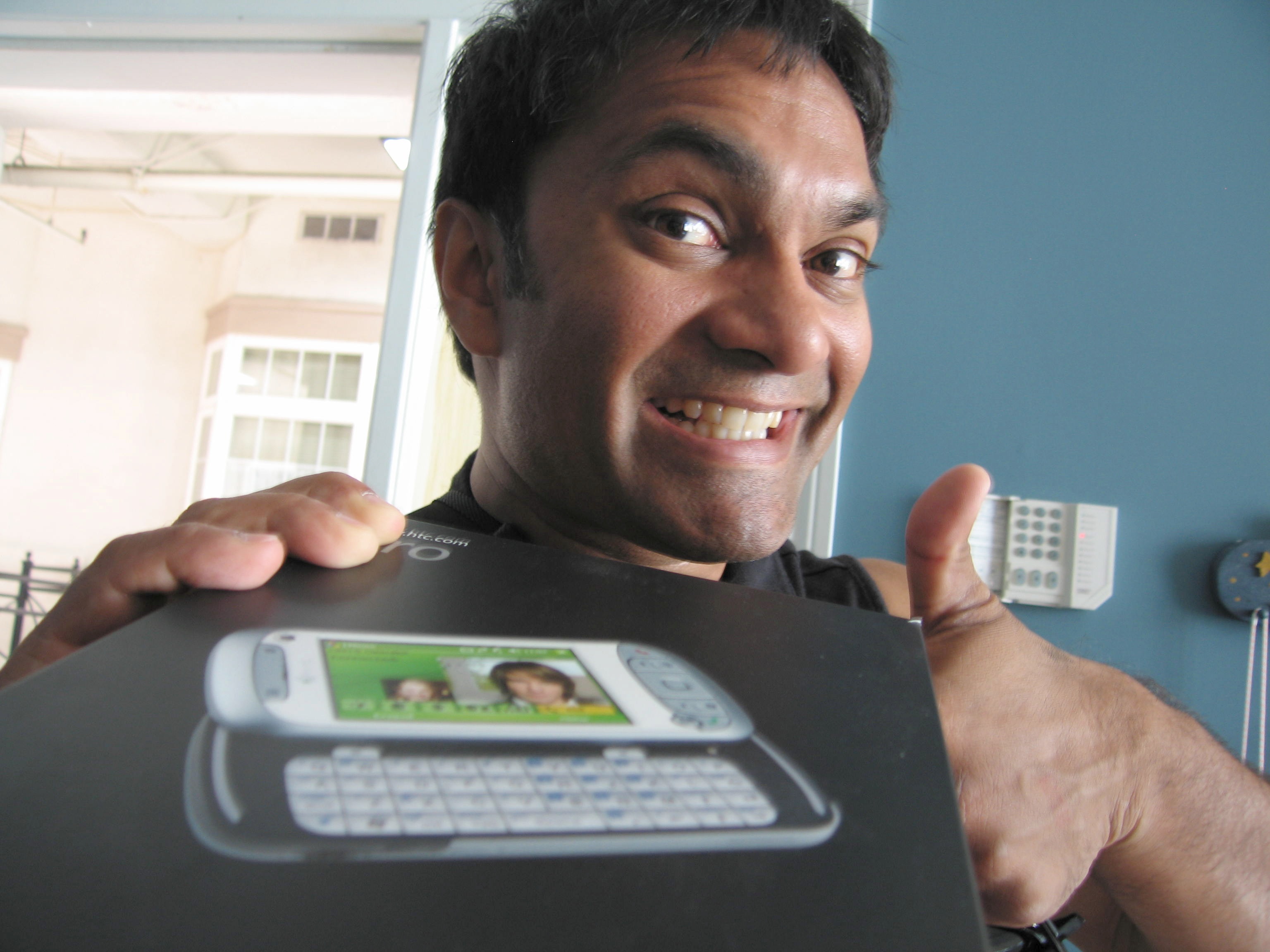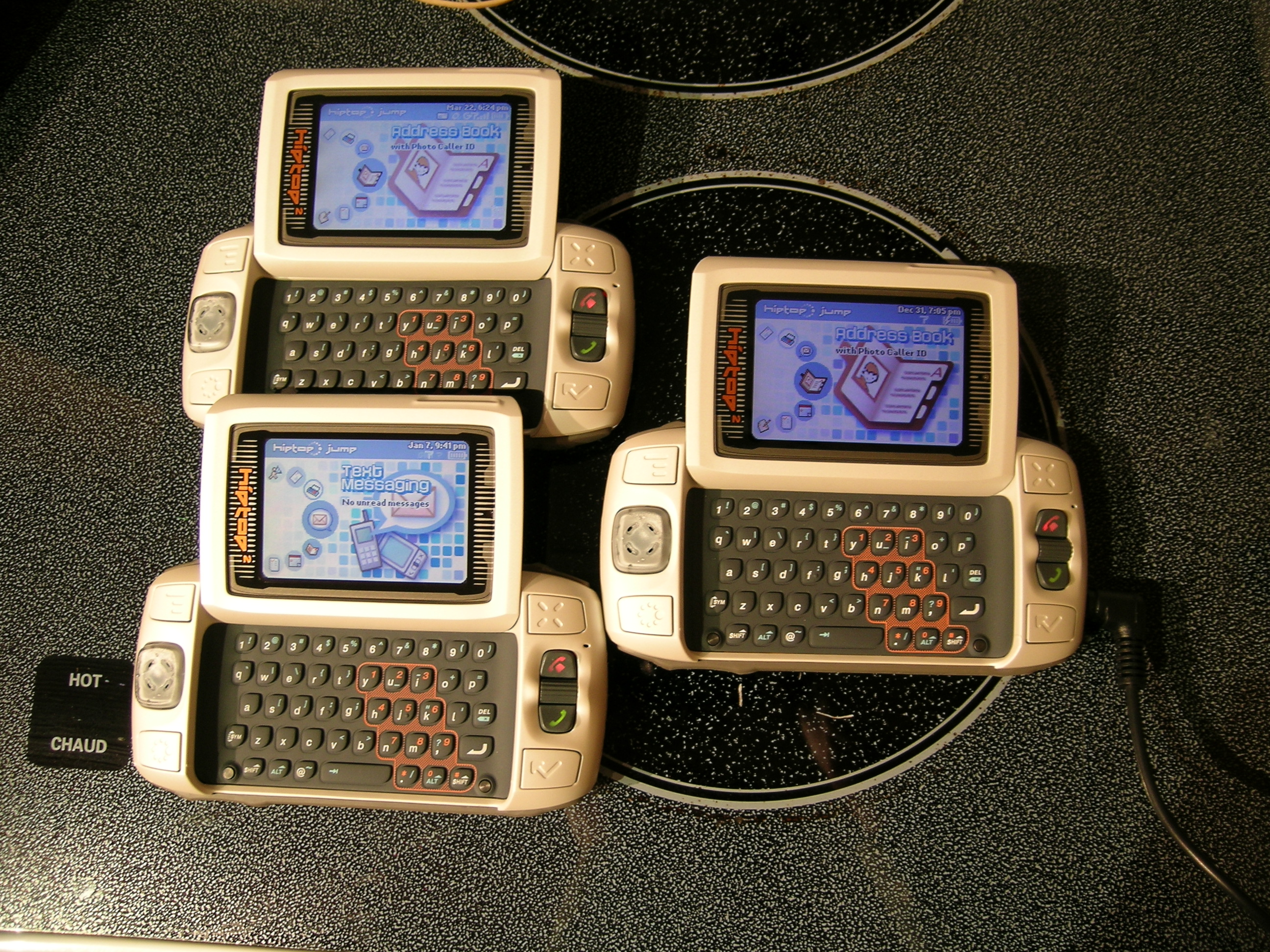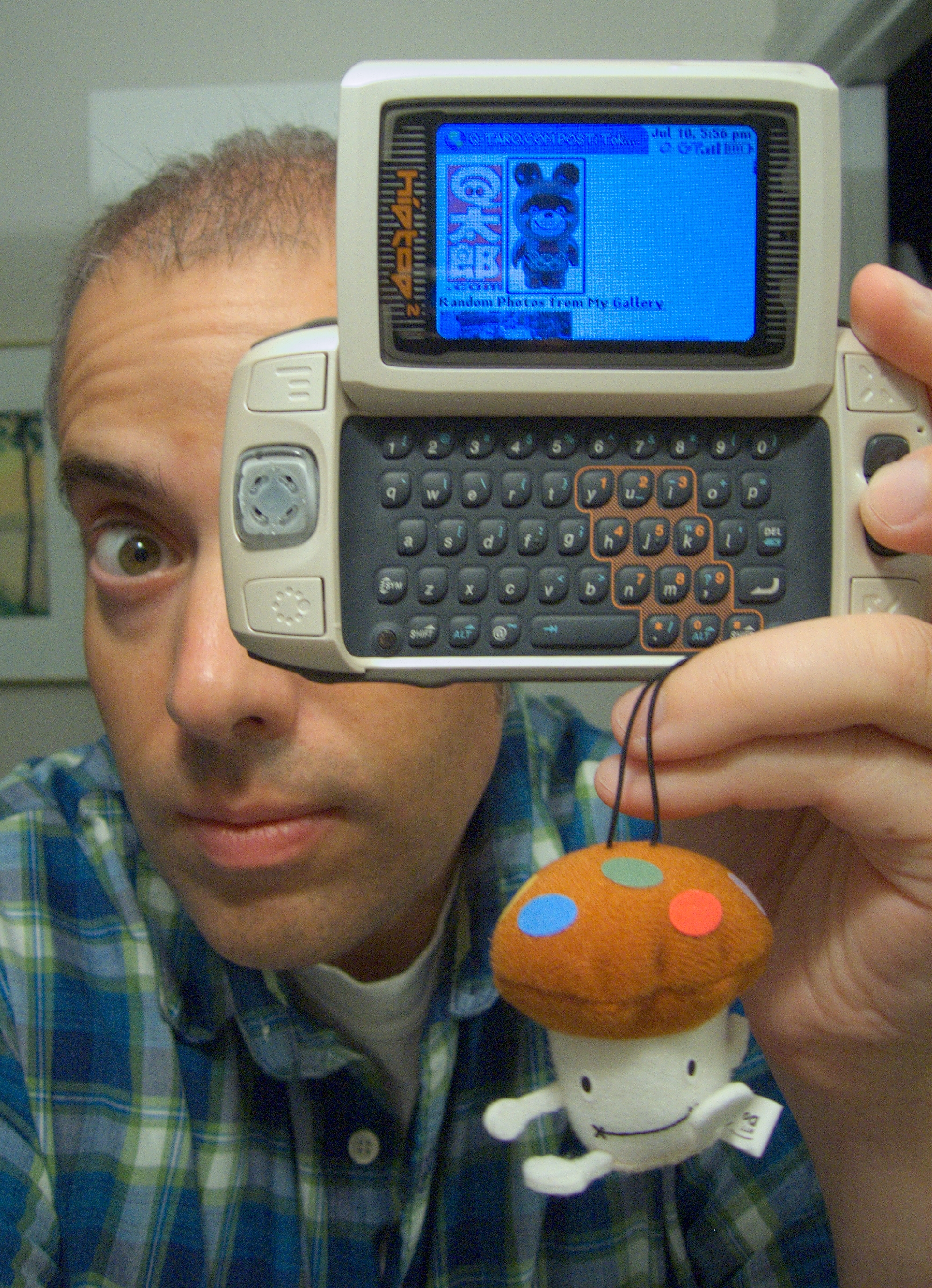HTC was a Taiwanese company that had previously made branded devices for others, most famously the Treo 650 and Compaq iPAQ. The TyTN was not their first Windows Mobile product, but the first to bear the company’s name. And it was fairly spectacular for the times. It was the first phone that I could use in Canada with 3G data service, offering download and upload speeds at least twice as fast as the then-current standards. Added to that was a WiFi radio, letting me hop on to a wireless Internet connection without using cellular data at all. All this plus an extra camera on the front of the phone meant that for the first time I could make voice and video calls using Skype, in flagrant disregard for whatever limitations I had on my calling plan. This was disruptive technology at its very best.
As you can imagine, this premium product had a premium price tag to match. My carrier hadn’t even heard of it, but I found a small local shop that specialized in importing super-high-powered phones from Europe. They could get me a TyTN, but it would set me back eleven hundred bucks. Flush with cash from my first professional contract as a theatre director, I placed my order.
My time with the TyTN was bittersweet. Perhaps its star turn was the nine days it spent with me in Seoul to ring in 2007. I received a “welcome to Korea” text from Fido the moment I powered it up upon arrival at Incheon Airport, and HTC’s flagship fit right in with the super-high-powered phones that the locals were using. My TyTn even got a compliment from the staff at my hotel.
But it was an altogether different story on a trip to Bermuda later that spring. I realized how dim the TyTN’s touch-screen display was when I couldn’t read texts or even see who was calling me in the bright island sunlight. Worse was battery life; with both 3G and WiFi radios turned on I can remember going from a full charge to empty in the space of a twenty-minute cab ride. This TyTN clearly needed much more power than its relatively small battery could provide.
Ultimately the TyTN’s downfall wasn’t the device itself but the desktop operating system it was tied to. I appreciated the push-email capabilities of Microsoft’s Exchange but I despised Outlook on my Windows laptop — so much so that I went back to my hiptop, dumped the Windows laptop for an Apple one and banished my TyTN to the dark recesses of my desk drawer. Then I gave it to a friend. Then he never used it and gave it back to me. Then I gave it to someone else. Then she dropped it in the toilet.
An inglorious end to a titan of smartphones.
]]>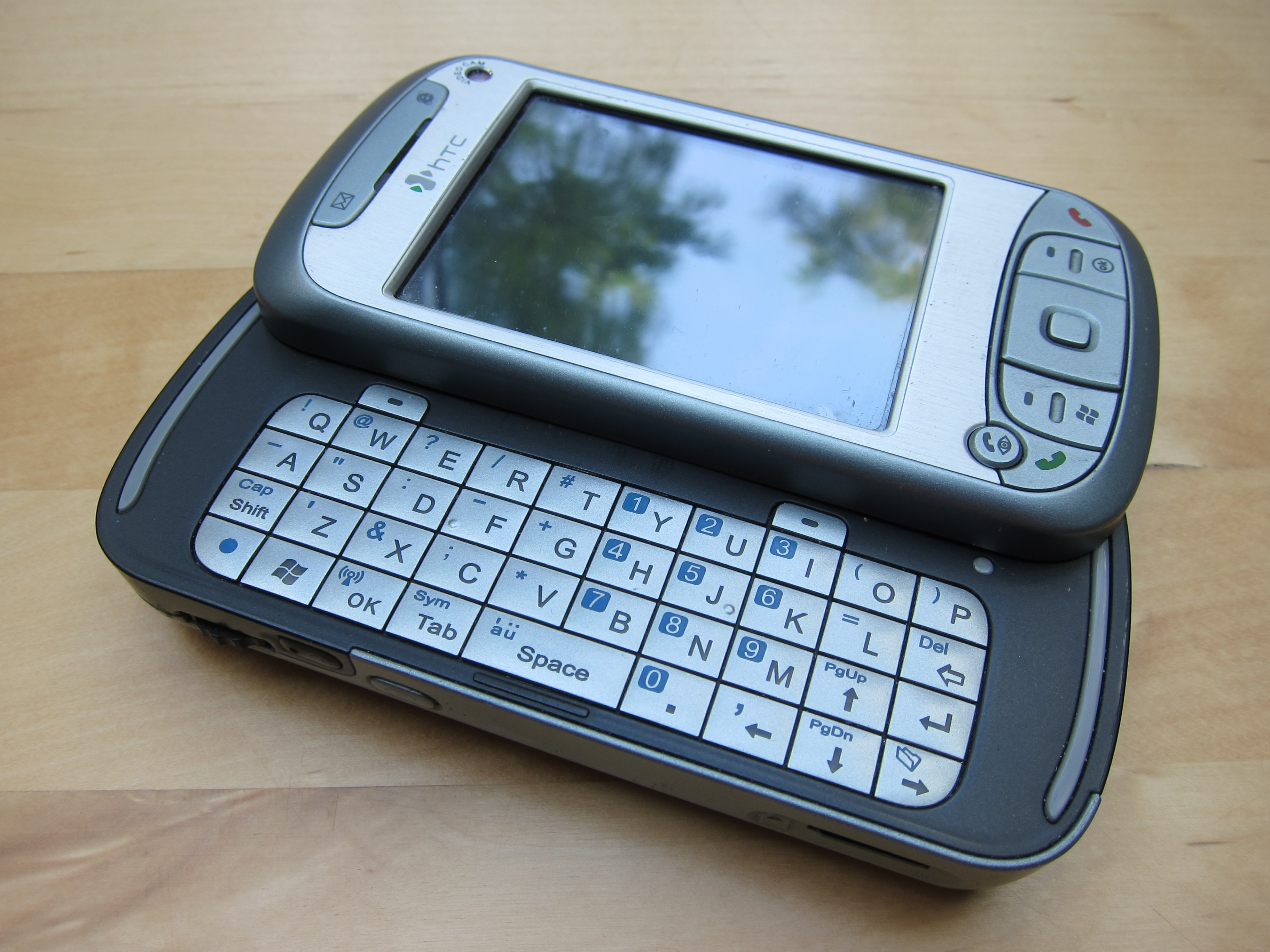
My HTC TyTN looks fine and well on the outside, but inside it’s a different story. It still powers up but the touchscreen doesn’t work — it won’t register any input or rotate into landscape mode with an open qwerty keypad. None of the hardware buttons work either. That my friend who was using it dropped it in some unnamed liquid-filled vessel (i.e. the toilet) might have something to do with it.
But when I got it back in December of 2006 it seemed like there was nothing it couldn’t do. At the time I was using a Windows laptop, and my web host of the day offered an Exchange Server for next to nothing — so I was able to reap all the benefits that the Microsoft ecosystem provided.
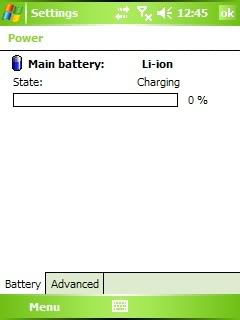
But all this power came at the price of battery life. I can distinctly remember going from a full charge to nothing in the space of about twenty minutes. Part of the problem was that Rogers had just lit up their HSDPA network in Toronto. Another issue was that I was always using it.
My TyTN’s star turn was a trip to Seoul, Korea to ring in 2007. Later that spring I moved on and handed it over to the same friend who bought and subsequently broke my Treo. At least he didn’t drop it in the toilet, though — that was someone else…
]]>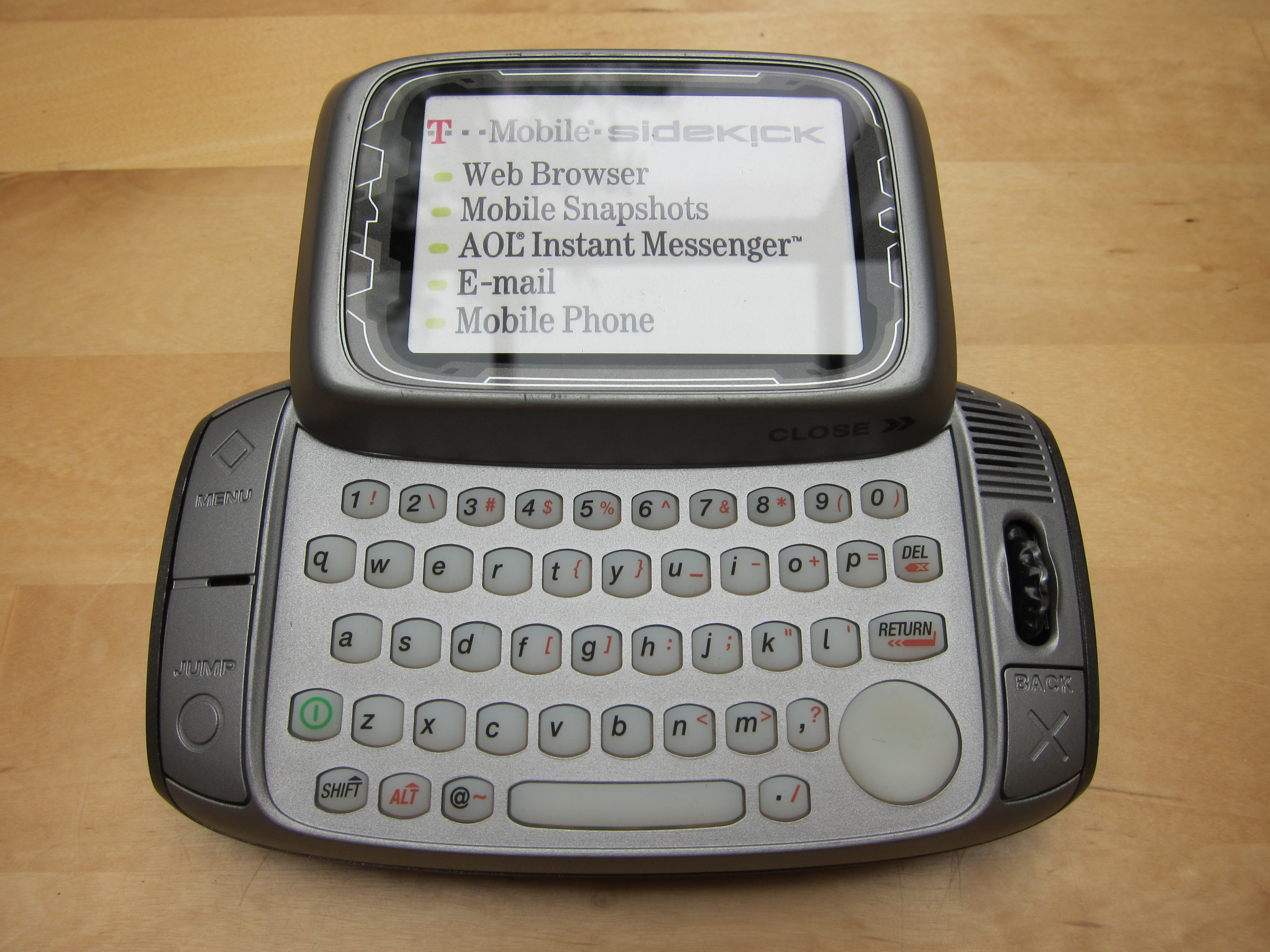
I no longer have my first-generation Danger hiptop, but I do have this T-Mobile dummy model — they call it the Sidekick down south.
Those fat and squishy rubber keys made it just about the best qwerty smartphone ever. The hiptop also had a persistent, proxied connection to the Internet; you can read more about that in the blog entry I posted when I first got one.
Hot stuff! Here are no less than three hiptop2s hanging out on my stove. If I remember correctly I had already upgraded to the second-gen model but wanted a backup device, and due to a screwup at Fido I somehow ended up with one more.
Thanks to its built-in loop I was able to adorn my hiptop with all manner of cell phone charms. This oversized Docomodake was really just for show — ordinarily I’d be sporting a much more tasteful ninja.
And here’s the hiptop that could have been. Fido was all set to start selling the hiptop3, but by then they had been fully assimilated into the evil Rogers empire and the order was cancelled. I can almost hear CEO Ted cackling from the boardroom: “Unlimited data? I don’t think so!”
Shortly thereafter I gave up my hiptop2 and moved on. You can read my requiem for it here.
]]>When I moved in to my current home in early 2000 I contacted Bell Canada to get a landline phone installed — as was the style of the day. When the technician arrived I immediately noticed that he had a Fido-branded cell phone clipped to his belt. I couldn’t help but ask:
“Shouldn’t you be using a Bell product?”
“Fido’s got a better signal,” was his terse reply. How’s that for a ringing endorsement?
Fido in the early 2000s was very much like Mobilicity and WIND Mobile a decade later; an upstart to the wireless status quo that competed simultaneously on two fronts — innovation and price. At one time, when the mobile Internet was available but not widely used in North America, I had an option on my account called Fido Pro. Eight extra dollars a month got me voicemail, call display/waiting/forwarding, unlimited text messaging and unlimited (circuit-switched) data — until Mobilicity and WIND came along there was no better value in Canada for mobile users.
A few years later Fido got me to ditch my landline altogether, thanks to the unlimited local airtime available on their City Fido initiative. And a month after that Rogers bought them up and everything slowly went to hell.
But I soldiered on with Fido until 2010, mostly because I didn’t really have anywhere else to go. But thanks to the magic of the subscriber identity module (SIM card), a removable chip found inside every GSM-based handset, I was able to burn through more mobiles than ever before…
]]>But by the summer of 1999 hope had arrived in the form of some new carriers. One of them was a company called clearNET. Like Bell their service ran on a digital PCS network; very much unlike Bell their pricing was easy to understand, and their plans generally cheaper. The trade-off was that clearNET’s service was confined to urban areas; to get a signal out in the country you had to “roam” on Bell or Rogers, at extra cost. For me a mobile phone was still a luxury, so this wasn’t an issue. And I spent most of my time in downtown Toronto, anyway… I was a hipster before hipsters were cool.
And so this mobile hipster became one of the early adopters of clearNET. I wasn’t alone, by any means; many of my friends and colleagues signed up with clearNET as well — thanks in no small part to their effective marketing. clearNET’s motto, “the future is friendly”, was a direct jab at the obfuscation practised by Bell and Rogers. Too many people would unwittingly walk into a Bell or Rogers Wireless store looking for a cheap cell phone and somehow walk out with a multi-year contract and a handset they didn’t want. Not so with clearNET.
Another clever clearNET idea was selling generic accessories with their own branding. An acquaintance of mine (who went on to star in a hit Broadway show) had a speaker phone for his car powered by the cigarette lighter jack. Though it was made of cheap plastic and sounded fairly tinny it had a very obvious clearNET logo on it, and I therefore wanted one.
My clearNET phone was a Nokia 6188, very similar to the 6185 I had used on Bell immediately prior. The big difference was the colour of the housing — whereas the 6185 was a morose grey my 6188 came in a funky sharkskin green. The only problem with this was that the surface was prone to scratches when dropped or even put into a pocket with keys. Fortunately for me clearNET had an extremely liberal return policy that allowed a customer to exchange any handset for a new one within 15 days of purchase, no questions asked. I abused this policy big-time, burning through at least three ever-so-slightly-scratched 6188s before finally succumbing and buying a protective pouch — a clearNET-branded one, of course.
In the year 2000 clearNET was bought up by Telus, a company from Western Canada. But I had already moved on to another upstart carrier, one that ran on an entirely different digital network from Europe. It proved to be a good choice; I stuck with them for the next ten years…
]]>
